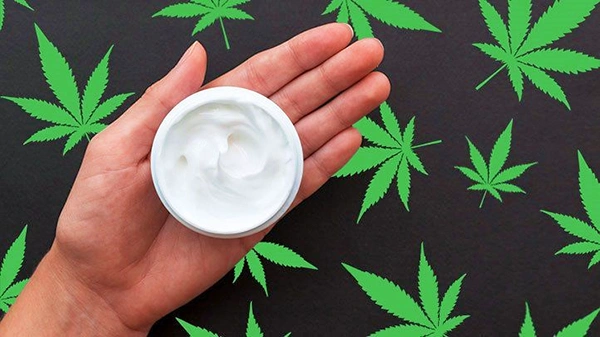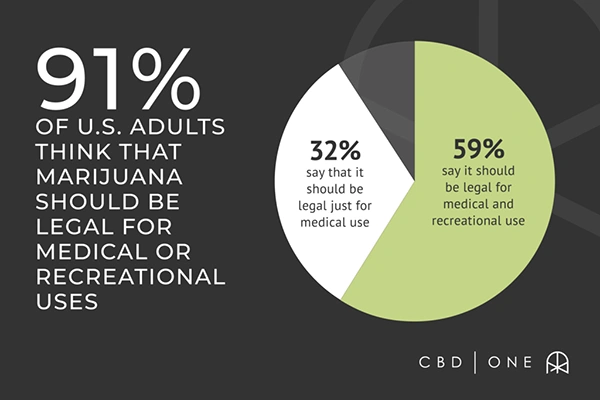CBD Topical Benefits for Skin, Joints, and Muscle Relief

“I don’t need an inspirational quote, I need CBD.”
- Someone
In recent years, CBD has exploded in popularity due to its diverse therapeutic benefits for the human body and mind. Whereas most choose to ingest CBD orally via capsules, gummies, or oils for whole-body effects, topical applications allow the targeting of specific areas for isolated relief and healing.
From epidermic conditions like acne, eczema, and psoriasis to irritated joints from arthritis to cramped, overworked muscle tissue, creams, balms, and salves hold exciting potential for symptom management and pain alleviation.
Keep reading to discover how it works on contact receptors near the skin’s surface to provide targeted effects plus the science behind using CBD topicals for common issues related to the cuticle, joints, and muscles.
How Topical CBD Works In The Body
CBD, short for cannabidiol, is one of over one hundred naturally occurring phytocannabinoids found in cannabis plants. Unlike THC, the psychoactive compound in marijuana, CBD will not get users high whatsoever.
Instead, cannabidiol interacts indirectly with cannabinoid sense organ located all over the human body as part of the endocannabinoid system (ECS), which helps regulate functions like mood, appetite, memory, sleep cycles, pain perception, immunity, and more. This system also has a strong presence in skin and peripheral tissues.
When topical CBD products – like balms, creams, roll-ons, gels, or salves – are applied onto the cuticle’s surface, cannabidiol along with other active botanicals can penetrate barriers in the skin, muscle, and joint tissues. They interact with nearby cannabinoid receptors to provide localized relief by calming excessive immune responses, soothing irritated nerve endings, and relaxing constricted muscle fibers and stiff, swollen joints.
Topical CBD achieves this without entering the bloodstream to any significant degree. Most of its users enjoy the benefits of contact sense organs without experiencing any mood-altering or mind-clouding side effects. Next let’s explore the compelling science behind using cannabidiol topicals for common epidermis, joint, and strength issues plaguing millions.

Skin Conditions (Eczema, Psoriasis, Acne)
Eczema, psoriasis, and acne are extremely common inflammatory cuticle conditions affecting adults and adolescents. Research indicates that due to its anti-inflammatory properties, topical CBD shows promise as an emerging treatment option for various skin issues.
For example, one 2021 study found patients using a CBD-infused topical ointment experienced reduced inflammation and fewer flare-ups of atopic dermatitis, the most common form of eczema. Cannabidiol regulates inflammatory cytokine production, calming this autoimmune reaction and attacking healthy cells.
Meanwhile, another study that same year showed topical cannabidiol decreased excessive keratin production to combat the scaley patches characteristic of psoriasis. Acne may also improve thanks to CBD regulating sebum production and inhibiting the proliferation of acne-causing sebaceous gland cells.
By fighting inflammation locally where applied, cannabidiol brings comfort to sensitive skin plagued by flare-ups, redness, cracking, scaly patches, and breakouts without the risks of steroids.
Arthritis & Joint Pain
It also holds exciting potential for providing arthritis relief when massaged directly onto affected, inflamed joints. Arthritis causes stiff, painful articulations as cartilage breaks down over time.
An emerging body of evidence indicates that through multiple mechanisms, topical CBD can reduce the pain, stiffness, and swelling around arthritis-related joint damage. The primary way cannabidiol tackles arthritic articulation is via interacting with CB2 receptors abundant in the tissues making up joints. Activating CB2 receptors inhibits inflammatory responses, dampens pain signals, and minimizes scar tissue build-up around damaged areas.
Human studies are still limited, but promising early research combined with strong anecdotal reports from arthritis patients using cannabidiol topicals points to strong potential for managing this progressive, activity-limiting condition topically.
Muscle Tightness & Overuse Conditions
From straining certain power groups during your workout, accumulated trigger point tension from poor posture, or just general soreness from strenuous activity, topical CBD offers a soothing, natural way to relieve muscle tightness and discomfort.
By penetrating underlying musculature and stimulating cannabinoid sense organs concentrated around motor neurons, It interacts with CB2 and vanilloid receptors involved in inflammatory responses to provide analgesic and anti-inflammatory relief without any psychoactive effects.
Research indicates this stimulation of endocannabinoid signaling can desensitize aggravated nerves and relax tense strength fibers by reducing contractions and easing spasmodic activity. For those who prefer natural comfort without medications like NSAIDs or worries of addiction and downsides from habit-forming painkillers, quality CBD topicals represent an excellent addition to your regimen.
How to Choose the Most Effective Topical CBD Products
Choosing the most effective topical CBD products involves a few key steps to ensure you’re getting a product that’s both safe and suited to your needs. Here are some tips to guide you through the selection process:
- Understand the Purpose: Identify why you’re considering the product. Different formulations are designed for various purposes, such as pain relief, skin health, or relaxation.
- Check the CBD Source: Look for products made from high-quality, organically grown hemp to ensure the cannabidiol is free from pesticides and other harmful chemicals.
- Consider the CBD Spectrum: Decide between full-spectrum, broad-spectrum, or isolate products. Full-spectrum ones contain all the compounds found in hemp, including a trace amount of THC, whereas broad-spectrum ones are THC-free but retain other cannabinoids. Isolates are pure cannabidiol.
- Examine the Concentration: The effectiveness of a topical CBD product is partly determined by its cannabidiol concentration. Higher concentrations may provide more pronounced effects, but the ideal potency depends on your specific needs.
- Look for Third-Party Testing: Reputable brands will have their products tested by independent laboratories to verify their cannabidiol content and purity. Check for a Certificate of Analysis (COA) to ensure the product meets safety standards.
- Read the Ingredient List: Effective topical CBD products often include additional ingredients like arnica or menthol for pain relief or vital oils for skin health. Ensure the product doesn’t contain any allergens or irritants for your epidermis.
Did You Know?
91% of adults in the U.S. think that Marijuana should be legal for medical and recreational purposes.

Dosing Guidelines for Topical CBD Products
Most CBD topicals follow straightforward usage instructions printed on the container:
- Step 1: Thoroughly wash and dry the target area (sore joint, inflamed patch, tight muscle tissue, etc)
- Step 2: Scoop/squeeze out the desired amount of topical onto fingers
- Step 3: Gently massage cream/ointment/gel evenly across the skin surface and let fully absorb
- Step 4: Reapply 2-3 times daily as needed for ongoing relief
When first using a new product, apply the minimum suggested amount, then build up slowly over subsequent uses if desired results are mild. Give it a week or two of consistent applications to fully gauge efficacy.
Potential downsides like skin irritation are rare but possible depending on ingredients and individual sensitivity. Discontinue the use of any topical causing adverse reactions. As with any supplement, consulting your doctor before adding it is wise.
Harnessing the Power of Topical CBD
From breakouts to body aches and everything between inflamed skin, tender joints, and knotted-up muscles, topical CBD creams, balms, and related products hold exciting promise for natural, non-intoxicating relief minus the downsides and addiction risks of traditional painkillers.
Thanks to interacting with cannabinoid and inflammation pathways receptors in underlying tissues, massaged-in cannabidiol can provide soothing effects directly where you need them most. Just be sure to research and invest only in premium quality backed by verifiable third-party testing and glowing user reviews to maximize your chances of success.






